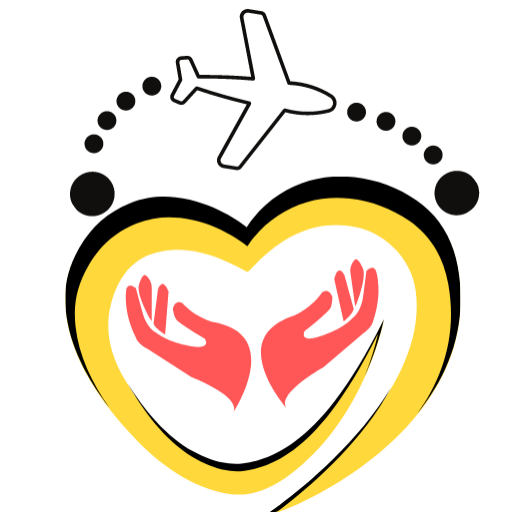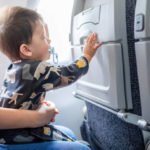First Aid Kit Essentials and Tips for Handling Health-Related Concerns during Family Travels
This post contains affiliate links. I may earn a commission at no extra cost to you if you make a purchase. Note that I’m not a health or outdoor safety professional, so further research is advised. Your support keeps TravelHealthyBlog running—thank you! Read the full disclosure. Read the full disclosure here.
Embarking on family adventures is a joyous experience, but ensuring the safety and well-being of your loved ones is paramount. A well-prepared first aid kit stands as an indispensable travel companion, providing reassurance and practical solutions to address unexpected health concerns that may arise on the journey.
In this comprehensive blog post, we will delve into the essentials of building a family-first aid kit, covering everything from basic medical supplies to items specifically tailored for children. Furthermore, mom travellers will gain valuable insights into handling common health-related concerns, empowering them with the knowledge needed to navigate the twists and turns of family travel confidently.
Building a Basic First Aid Kit

Essential Medical Supplies
Adhesive Bandages and Sterile Dressings:
The foundation of any first aid kit, adhesive bandages and sterile dressings are crucial for covering wounds and preventing infection. Include a variety of sizes to accommodate different injuries.
Antiseptic Wipes and Antibiotic Ointment:
Maintain cleanliness and promote healing by including antiseptic wipes and antibiotic ointment. These items help disinfect wounds and reduce the risk of infection.
Tweezers, Scissors, and Safety Pins:
Tools for handling various situations, tweezers assist in removing splinters, scissors allow for precise cutting of dressings or tape, and safety pins offer quick solutions for securing bandages or clothing.
Pain Relievers and Fever Reducers:
Over-the-counter pain relievers like acetaminophen or ibuprofen are essential for alleviating pain and reducing fever. Ensure you have options suitable for both adults and children.
Thermometer and Disposable Gloves:
A reliable thermometer helps monitor body temperature, while disposable gloves maintain hygiene when administering first aid. These items are essential for accurate assessments and safe care.
Medications for Common Ailments

Allergy Medication:
Antihistamines can be a lifesaver for unexpected allergic reactions. Include both adult and children’s formulations, considering any known allergies within your family.
Motion Sickness Medication:
Especially important for family trips, motion sickness medication helps prevent and alleviate nausea during travel.
Pain Medication for Adults and Children:
Alongside general pain relievers, have specific medications suitable for children, ensuring their well-being during unforeseen discomfort.
Anti-diarrheal Medication:
Address digestive issues promptly with anti-diarrheal medication, vital for maintaining comfort during travel.
Prescription Medications (if applicable):
Ensure an adequate supply of any prescription medications required by family members, along with relevant medical documentation.
Building a basic first aid kit forms the foundation of your family’s health preparedness during travel. In the next section, we will explore kid-friendly additions to the first aid kit, tailoring it to the unique needs of children.
Kid-Friendly Additions to the First Aid Kit
Children’s Pain and Fever Medication

Age-Appropriate Formulations:
Include pain and fever medication specifically designed for children. Choose formulations suitable for different age groups, ensuring accurate dosages for your little ones.
Liquid or Chewable Options:
Opt for liquid or chewable forms of medication for ease of administration to children who may have difficulty swallowing pills. These kid-friendly options make it simpler to provide the necessary care.
Pediatric Oral Rehydration Solution
Importance of Hydration:
It is vital to maintain proper hydration, especially for children. Include a pediatric oral rehydration solution to address dehydration, particularly in case of illnesses such as stomach flu.
Flavored Options for Palatability:
Consider flavored oral rehydration solutions to make them more palatable for children. This can encourage them to stay hydrated during periods of illness or discomfort.
Kids’ Bandages and Fun-shaped Adhesive Strips

Appealing Designs:
Children are often more receptive to first aid when it involves colorful and fun elements. Include bandages with appealing designs or fun-shaped adhesive strips to make the process more engaging for them.
Various Sizes for Different Injuries:
Ensure that your kit includes bandages of various sizes to accommodate the diverse injuries that children may experience. Having options suitable for different situations enhances the kit’s versatility.
Children’s Allergy Relief Medication
Non-Drowsy Options:
If allergies are a concern for your child, include non-drowsy allergy relief medication to address symptoms without causing fatigue, allowing them to remain active during your travels.
Consultation with Pediatrician:
Before including any new medication, especially for children, consult with your pediatrician to ensure compatibility with their health needs and any pre-existing conditions.
Child-Safe Thermometer

Digital or Forehead Thermometers:
Opt for a child-safe thermometer suitable for different age ranges. Digital or forehead thermometers are often more comfortable and less invasive for children.
Calibration Check:
Regularly check the calibration of the thermometer to maintain accuracy. This ensures reliable temperature readings, aiding in the assessment of your child’s health.
Kid-friendly additions to the first aid kit prioritize the unique health needs of children during travel. In the following section, we will explore specialized items for mom travellers, considering their specific health requirements and ensuring their well-being on the journey.
Specialized Items for Mom Travellers
Feminine Hygiene Products

Menstrual Supplies:
Include an ample supply of menstrual products tailored to mom travellers’ needs. Consider the duration of your trip and pack accordingly, ensuring comfort and hygiene throughout.
Discreet Disposal Bags:
For discreet and sanitary disposal, add disposable bags to your kit. These bags are especially convenient when proper disposal facilities are not readily available.
Prescription Medications (if applicable)
Adequate Supply:
Ensure you have a sufficient quantity of any prescription medications you require. Consider the duration of your trip and potential delays to guarantee you have an ample supply.
Clear Medication Schedule:
Include a clear schedule or reminder system for taking prescription medications. This helps mom travellers stay on track with their medication routine, promoting overall health and well-being.
Sunscreen and Lip Balm with SPF

Broad-Spectrum Sunscreen:
Protect your skin from the sun’s harmful rays by including a broad-spectrum sunscreen. Choose a suitable SPF level and reapply as needed, especially during outdoor activities.
Lip Balm with SPF:
Lips can be sensitive to sun exposure as well. Pack a lip balm with SPF to prevent chapping and sun damage, ensuring comprehensive protection.
Insect Repellent
Effective Repellent:
Ward off pesky insects by including an effective insect repellent. This is particularly important if your travel destination is prone to insects or if you plan on spending time outdoors.
Family-Friendly Formulas:
Choose insect repellents suitable for the entire family, considering the safety of children. Look for family-friendly formulas that provide protection without compromising on safety.
Personalized Medical Information
Allergies and Medical Conditions:
Create a concise document outlining any allergies, medical conditions, or relevant health information. This information can be crucial in case of emergencies and ensures prompt and accurate medical assistance.
Emergency Contacts:

Include a list of emergency contacts, both local and back home, ensuring that necessary individuals can be reached swiftly if needed.
These specialized items cater to the unique health requirements of mom travellers, promoting a safe and comfortable travel experience. In the next section, we will explore insights into handling common health concerns that may arise during family journeys, providing valuable information for a proactive approach to health management.
Gaining Insights into Common Health Concerns
Motion Sickness: Prevention and Remedies
Preventative Measures:
For family members prone to motion sickness, take proactive measures such as choosing seats with minimal movement, providing fresh air, and encouraging them to focus on a fixed point.
Remedies:
Pack motion sickness medication and consider natural remedies like ginger candies or wristbands with acupressure points. Familiarize yourself with these options to address motion sickness swiftly.
Dealing with Allergies Away from Home
Identification of Triggers:
Be aware of common allergens at your travel destination and take precautions accordingly. Identify triggers and communicate them to family members and any travel companions.
Carry Allergy Medications:
Ensure you have an ample supply of allergy medications, both for adults and children. Additionally, consider bringing a compact air purifier for hotel rooms to reduce potential allergens.
Basic First Aid for Minor Injuries
Wound Cleaning:
Basic wound cleaning is essential for addressing minor injuries promptly. It’s advisable to carry a small first aid kit with disposable gloves, antiseptic wipes, and sterile dressings. Begin by washing your hands thoroughly, then use disposable gloves to protect against infection. Clean the wound gently with antiseptic wipes, removing any debris or dirt. Apply an antiseptic ointment if available, and cover the wound with a sterile dressing to promote healing.

Regularly check and change dressings, and seek professional medical assistance for more serious injuries. This preparedness ensures that moms can address minor wounds effectively while on the go.
Emergency Contact Awareness:
Knowing emergency contact information is vital, especially for older children. Teach them how to seek help and communicate effectively in case of minor injuries.
Recognizing and Managing Travel-related Stress
Stress Reduction Techniques:
Reducing stress during travel for both parents and children can be achieved through simple yet effective techniques. Incorporate deep breathing exercises and mindfulness into your routine, providing moments of calm and relaxation. Engaging in familiar routines from home can offer a sense of comfort and stability in new environments. Encourage open communication with your children, allowing them to express any concerns or feelings, and be responsive to their needs.
Additionally, incorporating enjoyable activities, such as playing games or listening to soothing music, can contribute to a more relaxed travel experience for everyone.

These stress reduction techniques not only enhance the overall journey but also create a positive and enjoyable atmosphere for both parents and children..
Open Communication:
Foster open communication within the family to address any concerns or anxieties. Encourage sharing feelings, creating a supportive environment for everyone.
Seeking Local Medical Assistance and Emergency Numbers
Locate Nearby Medical Facilities:
Familiarize yourself with the location of nearby medical facilities at your travel destination. Know where hospitals, clinics, or pharmacies are situated for quick access if needed.
Emergency Numbers:
Research and save local emergency numbers, including those for medical assistance and services. This ensures that you can swiftly contact the appropriate authorities in case of emergencies.
Gaining insights into these common health concerns equips mom travellers with the knowledge and preparedness necessary to navigate various health-related situations during their journey. In the next section, we will provide tips for maintaining and updating the first aid kit, ensuring it remains a reliable companion throughout your family’s travels.
Tips for Maintaining and Updating the First Aid Kit

Regularly Check and Replace Expired Items
Scheduled Check-ups:
Establish a routine for checking the first aid kit regularly, especially before embarking on a trip. Conduct scheduled check-ups to ensure that all items are within their expiration dates.
Dispose of Expired Items:
Promptly dispose of any expired medications or supplies. Replace them with fresh, unexpired items to maintain the kit’s efficacy.
Customize the Kit Based on Family Members’ Health Needs
Individual Health Profiles:
Consider the specific health needs of each family member. If there are new medications or health requirements, customize the kit accordingly to address everyone’s unique health concerns.
Seasonal Adjustments:
Modify the first aid kit based on the season and destination. Consider factors such as climate, prevalent illnesses, and potential health risks associated with the specific travel conditions.
Consider the Destination’s Specific Health Risks
Research Health Risks:
Before traveling, research any health risks associated with your destination. Tailor the first aid kit to address potential hazards, ensuring that you are adequately prepared for the specific health challenges of the location.
Vaccinations and Preventive Measures:
If applicable, ensure that family members have received necessary vaccinations. Include preventive measures in the kit, such as insect repellents or medications recommended for the destination.
Include a Basic First Aid Manual or Guide
Educational Resource:
Pack a basic first aid manual or guide within the kit. This resource can be valuable in providing step-by-step instructions for administering first aid in various situations.
Family Familiarization:
Familiarize all family members, especially older children, with the contents of the first aid kit and how to use them. This knowledge empowers everyone to respond effectively in case of emergencies.
Teach Family Members How to Use the Kit Safely

Age-Appropriate Training:
Tailor training sessions to the age of each family member. Teach older children how to use specific items in the kit responsibly, ensuring they understand the importance of safety and proper administration.
Emergency Protocols:
Establish clear emergency protocols for the family. Teach everyone when and how to use the first aid kit, emphasizing responsible and safe practices during health-related situations.
By implementing these tips, mom travellers can ensure that their first aid kit remains a reliable and up-to-date resource, ready to address any health concerns that may arise during family travels.
Conclusion
In the ever-changing landscape of family travel, a well-prepared first aid kit emerges as a steadfast ally, offering peace of mind and practical solutions for unexpected health challenges. As you embark on your family adventures, remember that preparedness is key. Regularly check and update your first aid kit, customizing it based on the health needs of each family member and the specific risks associated with your travel destination. Empower your family by educating them on the contents of the kit and teaching them safe usage.
May your travels be filled with joy, discovery, and the assurance that comes with knowing you are well-prepared for any health-related scenario. Safe and healthy travels to you and your family, as you navigate the world with confidence and resilience, armed with a well-stocked and well-maintained first aid kit.













